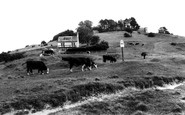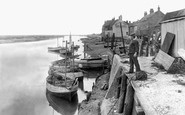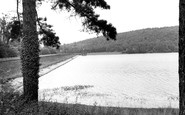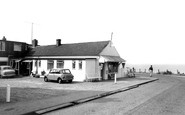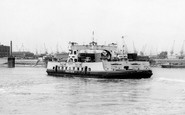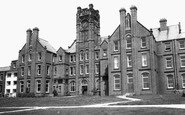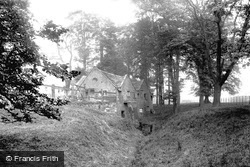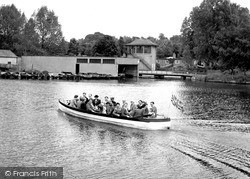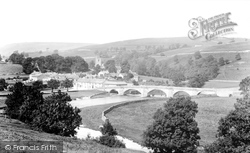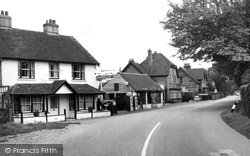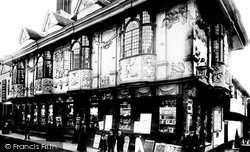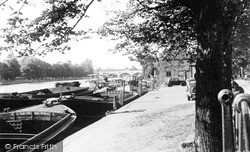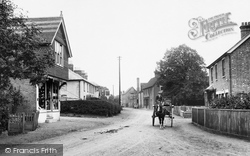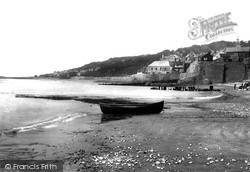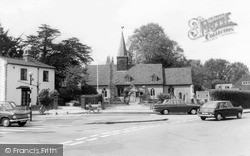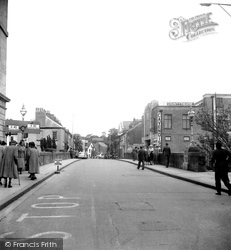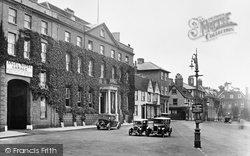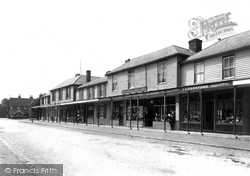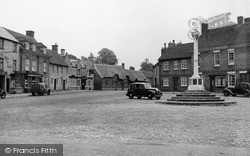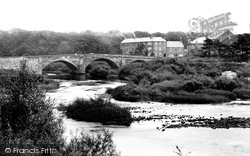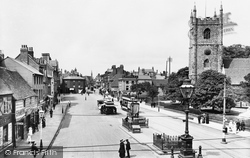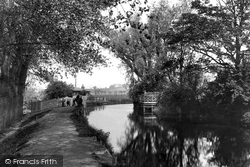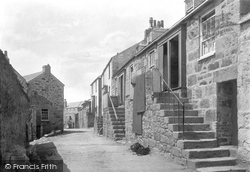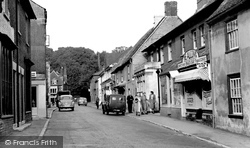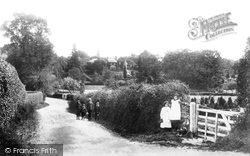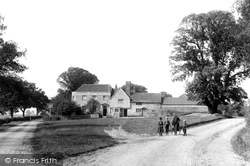Places
3 places found.
Those places high-lighted have photos. All locations may have maps, books and memories.
Photos
68 photos found. Showing results 1,561 to 68.
Maps
12 maps found.
Books
15 books found. Showing results 1,873 to 15.
Memories
7,564 memories found. Showing results 781 to 790.
Christmas Eves 1960s
I was born in Stroud and lived in Cashesgreen and Paganhill until I was 11 when the family moved to Hertfordshire. My aunt lived at Minchinhampton in a house my sister now owns. As children we remember making the then very ...Read more
A memory of Rodborough in 1963 by
A Year To Remember
How well I remember arriving at Wells-next-the-Sea from Leicester as a new bride. My husband was a former high school pen-friend who was now in England serving in the U.S Air Force, having been in the country from his ...Read more
A memory of Wells-Next-The-Sea in 1951 by
Memories Of Swithland
My first memory of Swithland Village goes way back to the days when I was very young. The war was over and we had become accustomed to Holidays at Home instead of going to the sea-side. My parents bought a chalet in what we ...Read more
A memory of Swithland in 1947 by
Days Gone By
My memories of Greyabbey date back to 1940 just after the Blitz when Mum and her 3 sisters plus one sister-in-law with a bunch of kids relocated to Cardy, a small community appox. 3 miles from Greyabbey. I was 8 years of age at the ...Read more
A memory of Greyabbey in 1940 by
"The Cafe"
A familiar landmark for anybody who knows Overstrand. This picture could have been taken from my old front garden down Cliff Road. When I first became interested in cricket (1964-5 ish) around the age of 9 or 10, I would be watching the ...Read more
A memory of Overstrand by
Woolwich Ferry
There has been a ferry at Woolwich for many centuries but the people of Woolwich complained in the 1880s that West London had free access across the River Thames by bridges so why couldn't they have free travel? The river was too busy ...Read more
A memory of Woolwich by
Portwrinkle Beach
My parents used to take me there after school sometimes on their half day off from Menheniot C0-Op in the 1950s and early 1960s when I was a child. It was a steep climb down to the beach from the road but worth the effort. Once ...Read more
A memory of Portwrinkle by
Summer Trips To Martin"S
My sister Pauline and I used to come here with our mother, and sometimes father, on hot summer days, around 1948 to 1952 (age 6 to 10). We commuted three stops from Reading South in electric trains. I basically learned the ...Read more
A memory of Wokingham in 1950 by
Where I Was Born
My Beginning, at Sole Street near Cobham Kent. (9th March 1946 - 2nd January 1951) I was born on Saturday March 9th 1946 at 3.29pm at Temperley, The Street, Sole Street, Kent. I was delivered at home by the ...Read more
A memory of Sole Street in 1946
Heswall Shore
My nanny and gampi lived on Banks Road in the 1960s. Nanny (Tilly Wilson) used to shell the shrimps in her kitchen. We would pay them a visit on our way down to Heswall shore and the shrimps would be piled high in the middle of the cold ...Read more
A memory of Heswall in 1967 by
Captions
2,501 captions found. Showing results 1,873 to 1,896.
Dunham Mill dates back to the medieval period; it was one of only a handful of mills in this part of Cheshire.
The boating lake covered 30 acres. The smaller lake, for younger children, was separated from the larger one by a hump-backed bridge (K13007, pages 76-77).
In the distance is the parish church of St Wilfred's, which is noted for its Norse hog-back gravestones and a Norse font dating from the 11th century.
This was the main road through the village, before the advent of by-passes; we are looking back in the direction of Blackwater. This was the A327.
When this photograph was taken, the richly pargetted Ancient House, which dates back to medieval times, was occupied by Fred Pawsey, selling books and stationery.
Empty barges waiting to be towed back down the river are tied up at the embankment alongside the Portsmouth Road where it becomes the High Street.
Slough dates back to the 12th century, when it was a hamlet on the London to Bath road. The settlement later spread to the neighbouring parish of Stoke Poges.
On our way back to Camberley we arrive at the Dukes Head public house. Notice the telegraph poles supplying the new telephone system to those who could afford it.
The boating lake covered 30 acres. The smaller lake, for younger children, was separated from the larger one by a hump-backed bridge (K13007, pages 76-77).
Back Beach was the fiefdom of William Curtis & Sons, boatmen and fish merchants from nearby Long Entry on Church Cliffs. The spot was locally known as Curtis Cove.
The parish church dates back to the 14th century, with 16th-century additions from when the simple old building was enlarged.
Looking back across the bridge towards Salutation Square. The Cavendish County Theatre to the right has since been demolished and this area is now the site of the new County Offices.
This photograph was taken back in the days when an open space in a town did not have to be completely covered by cars! The Angel Hotel was immortalised in Dickens `Pickwick Papers`.
Slough dates back to the 12th century, when it was a hamlet on the London to Bath road. The settlement later spread to the neighbouring parish of Stoke Poges.
The photographer moved back down the road and caught the colonnade of shops, one of Hawkhurst's best known features; this is an early 19th-century shopping arcade with weatherboarded houses and cast-iron
Time stands still on a summer's afternoon, with houses going back four hundred years placed all around the square. The market is still held here, and buyers and sellers come in from miles around.
Boroughbridge, to the southeast of Ripon, dates back to Norman times, when a bridge was constructed over the Ure. It was then known as Burgbridge, the borough on the bridge.
St Mary's Butts is in the centre of Reading. The chequerboard flint and limestone tower of the church of St Mary's is a distinctive local landmark.
Dating back to the 18th century, the deed to each of these cottages restircts the householder to replacing the roof only with thatch, and further prescribes the method and colour of redecoration that may
Enjoying a stroll along the riverside path beside the Stour. Not far from here are some half-timbered houses dating back to the time when Sudbury was one of the most important weaving towns.
This view looks towards Back Road West. (St Ives' streets were often named with commendable simplicity).
People have lived in the vicinity of Fordingbridge for millennia. Not far away at Castle Hill is a hillfort dating back to the Iron Age.
As we turn down Higgs Lane, this is what we would see looking back towards the main road.
The Stag Inn dates back to the 18th century, and the elm tree on the right reputedly marked the centre of Windsor Forest.
Places (3)
Photos (68)
Memories (7564)
Books (15)
Maps (12)



